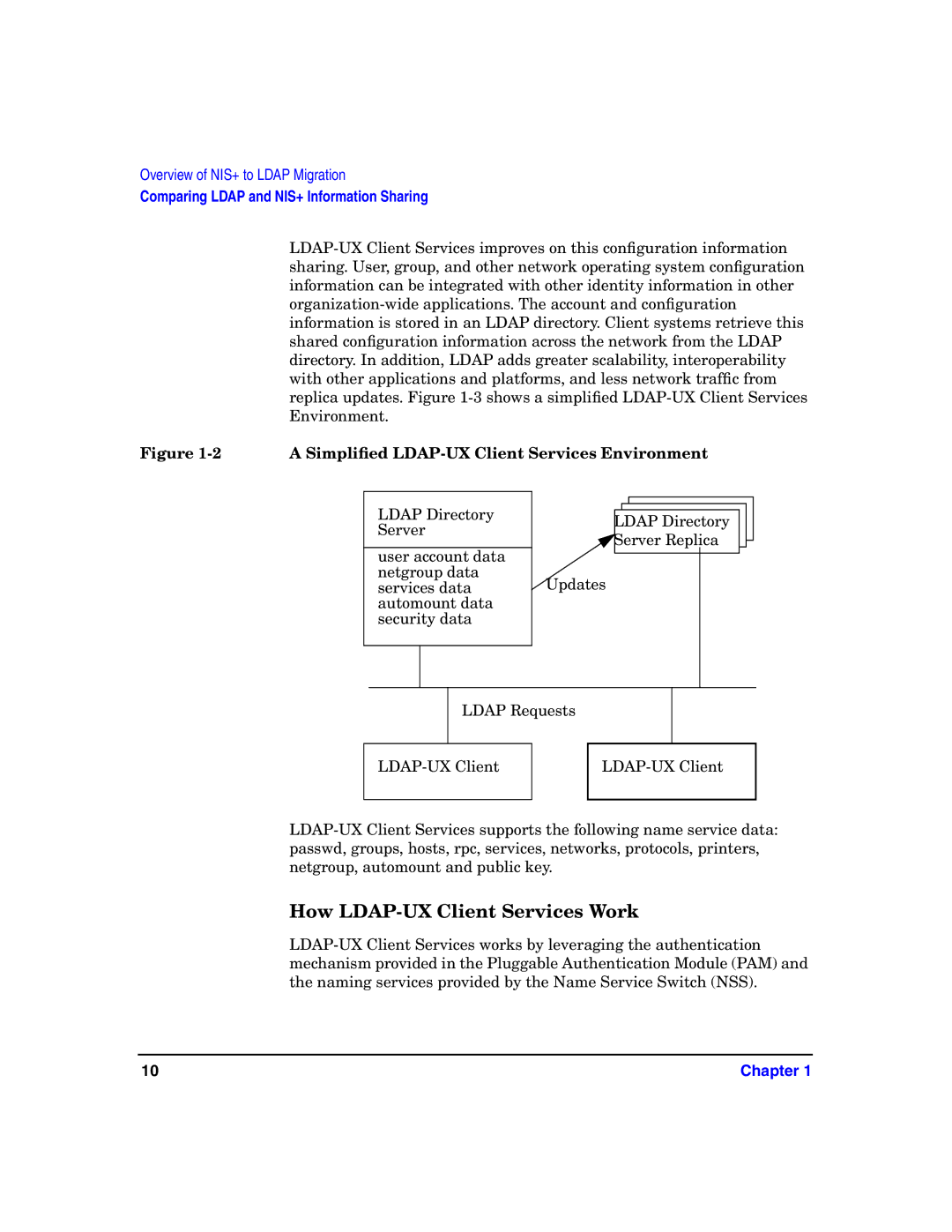
Overview of NIS+ to LDAP Migration
Comparing LDAP and NIS+ Information Sharing
| |
| sharing. User, group, and other network operating system configuration |
| information can be integrated with other identity information in other |
| |
| information is stored in an LDAP directory. Client systems retrieve this |
| shared configuration information across the network from the LDAP |
| directory. In addition, LDAP adds greater scalability, interoperability |
| with other applications and platforms, and less network traffic from |
| replica updates. Figure |
| Environment. |
Figure | A Simplified |
LDAP Directory Server
user account data netgroup data services data automount data security data
LDAP Directory
![]() Server Replica
Server Replica
Updates
LDAP Requests
How LDAP-UX Client Services Work
10 | Chapter 1 |
